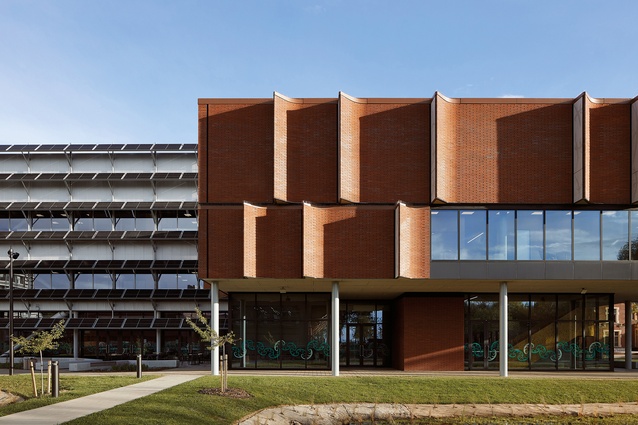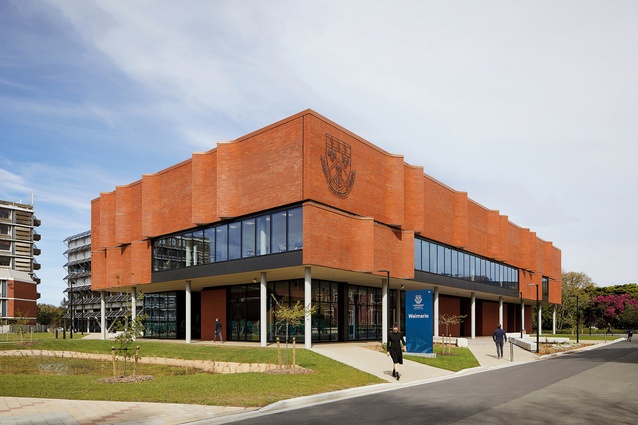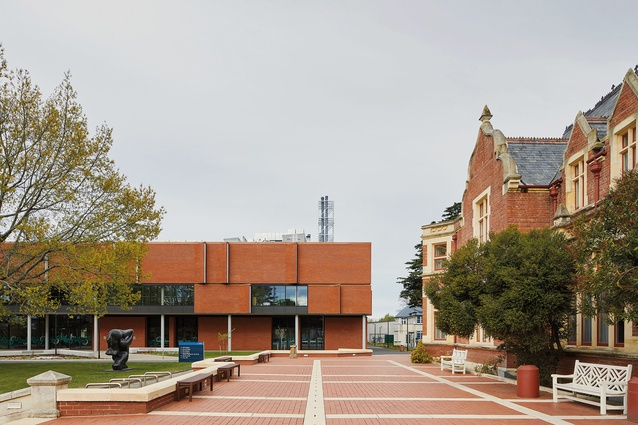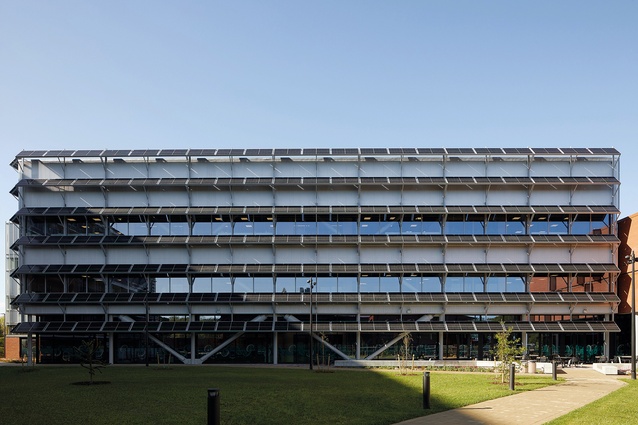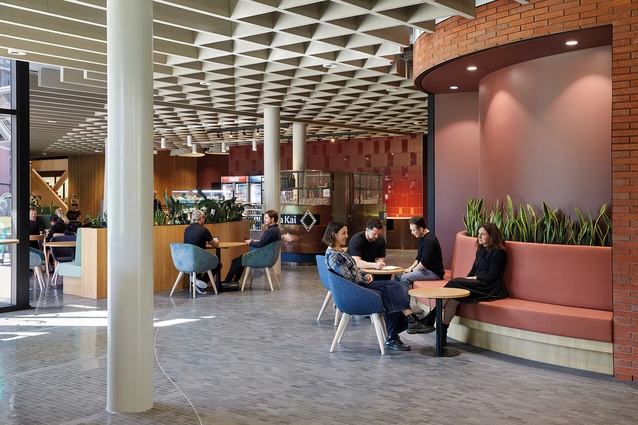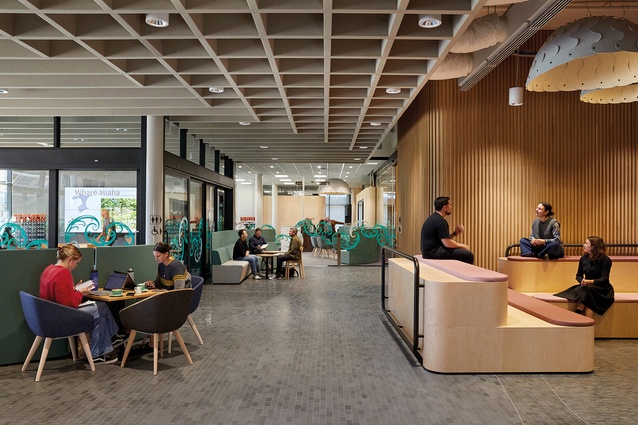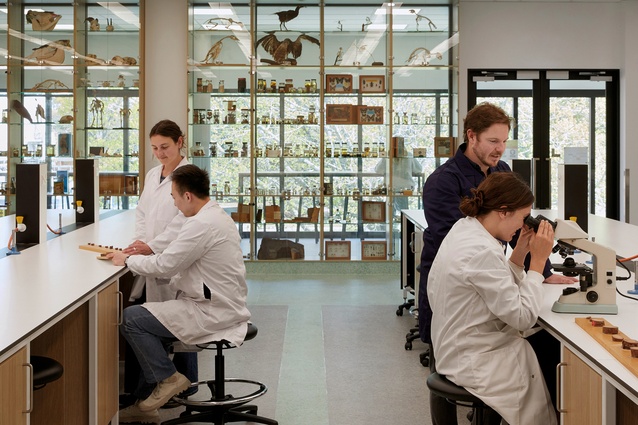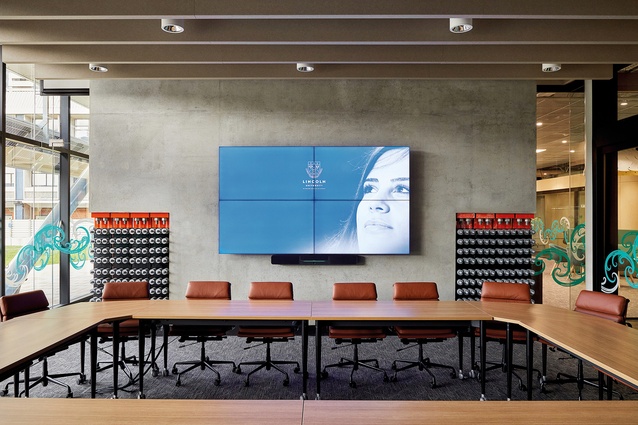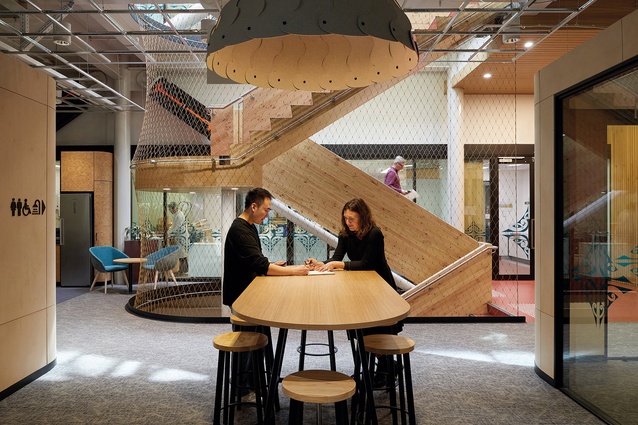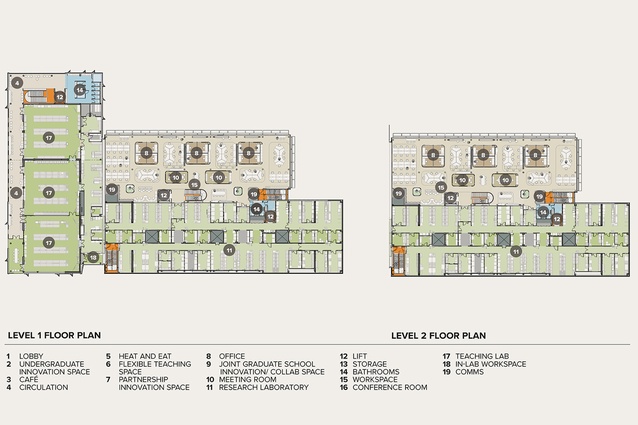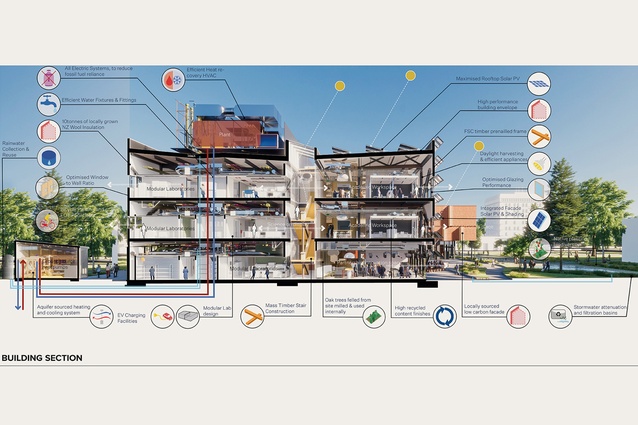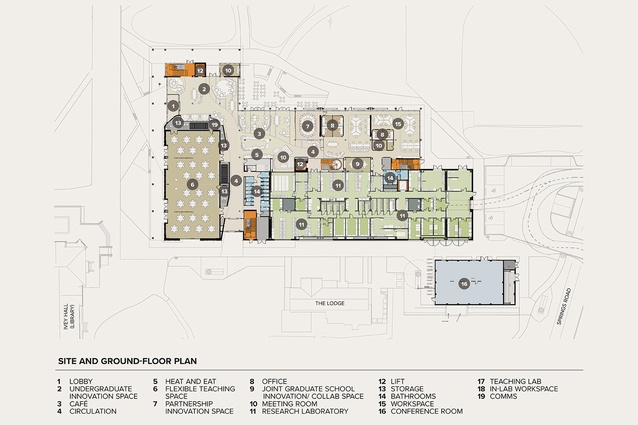Science on show
Matthew Webby explores the expressive curves, the sustainability and seismic credentials, and the carefully curated work and teaching spaces of Waimarie, Lincoln University’s new agricultural science facility by Warren and Mahoney and Lab-works Architecture.
As a child, I grew up around science labs. My mother was a research scientist at one of our country’s science institutes and, under more relaxed health-and-safety regimes, I would often spend time in her labs during school holidays and for the odd sick day. From this early exposure, I absorbed that science was something slow, methodical and, as technology continues to advance, increasingly minute, while its architecture was generally cellular and sterile. When Joseph Hampton, Warren and Mahoney’s project lead for Waimarie, described one of the client drivers as ‘science on display’, my interest was piqued.
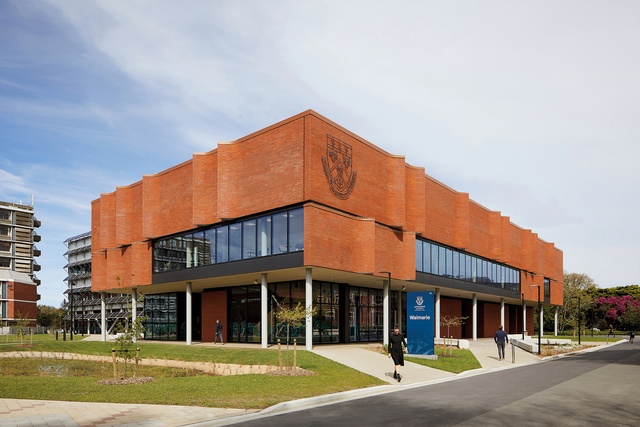
Dating back to 1878, Lincoln University is the oldest agricultural teaching institute in the Southern Hemisphere. Located in Christchurch’s satellite town of Lincoln, the campus’ park-like setting of established, deciduous trees speaks to its colonial roots and Waimarie is the university’s flagship new 9450m2 science research and teaching facility.
The facility is broken into two forms: a lower two-storey brick volume, containing teaching-focused facilities, paired with a taller, corrugate-clad, research-focused volume. The material choices are in part contextual, brick being in response to the adjacent Jacobethan façade of Ivey Hall (Frederick Strouts, 1880), and in part referential, corrugated zincalume cladding being a nod to Lincoln University’s agricultural roots. Both are, however, pragmatic choices for a project tight on dollars and carbon.
Interfacing with the surrounding campus life, the brick teaching form is the finer of the two volumes, with a well-detailed colonnade facing onto Ivey Hall’s lawn. Paired with generous glazing, the colonnade paving and brick walls are articulated with cultural patterning, developed with local artist Piri Cowie and Te Taumutu Rūnanga bringing the cultural narrative to the forefront of the campus.
While the form is only two levels, a sense of greater presence within the campus is achieved through generously scaled parapet walls. The upper brick walls are articulated with repeating flutes of brick, peeling out to form projections beyond the façade line. Hampton describes this as being inspired by the proportioning and detailing of the adjacent Ivey Hall and, similar to what is left of Ivey Hall, it is all façadism, but this is not a criticism. This detailing provides refinement, depth and shadow to what could otherwise have been an over-scaled brick box. Where the brick façade peels back, further cultural artworks are revealed on the flat returns. As a contextual object, the block is both well considered and well built.
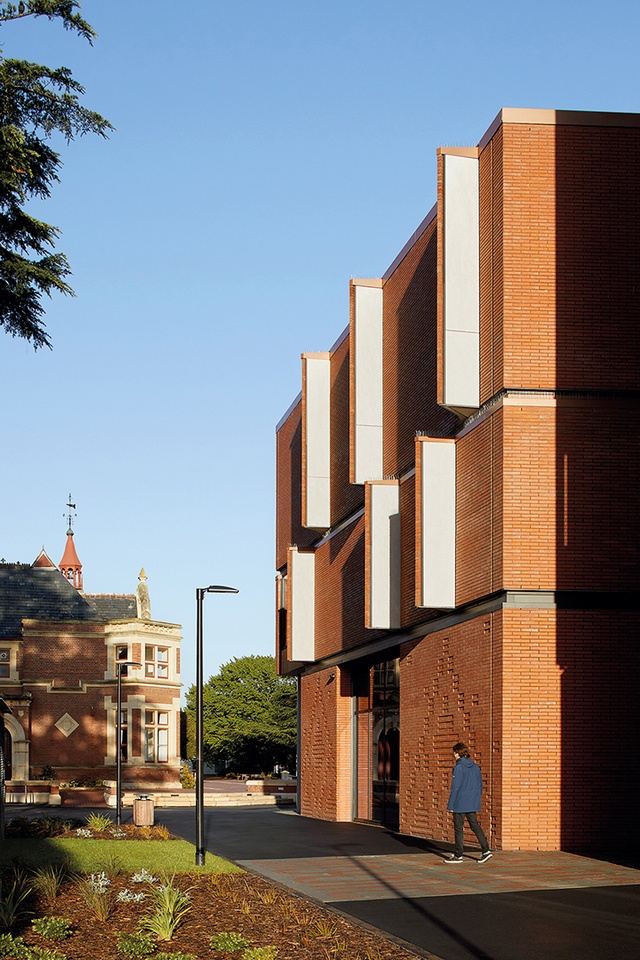
From the colonnade, you are welcomed into Waimarie through a generous and inviting social hub. Wrapped by meeting spaces and nooks, this hub connects the café and ground-floor, flat-floored teaching space. The distinction of the two volumes externally is dissolved internally, as they are seamlessly blended. From the social hub, an open stair takes students up to three teaching labs. After the sinuous connectivity of the ground floor, the sequence as you move upstairs becomes more constrained, leading to a wide cul-de-sac, which is lined, in part, with vitrines displaying skeletons and specimens floating in jars — science on display, literally.
The connection between the social hub and the research space is comparatively uninterrupted. The fluid flow through the ground floor continues up a CLT stair and, without even passing through a door, you are standing within the workspace for academic staff and post-graduate students. Here, the common tension of open-plan versus cellular offices has been cleverly mediated through plywood-clad pods and social tea bays, separating open-plan desking into small clusters. This solution is still a long way off the traditional cellular academic offices with walls lined with books — and there is a distinct lack of books in sight — but the workspaces are intimate in comparison to the scale of the building.
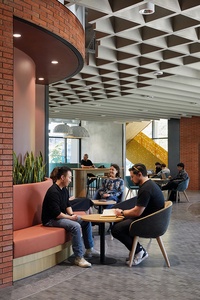
This intimacy is supported by the surprisingly warm and rich interiors of timbers and pastel tones that run through Waimarie. Science facilities commonly default to clinical white material palettes but, here, Hampton described the inspiration coming from soil maps found in a “well thumbed” book on New Zealand soils presented to the design team during stakeholder engagement. The soft hues of pinks, greens and yellows are used throughout the interior, combined with earthly terracotta tones and natural timbers. Oak trees cut down on the campus have been milled and used as slatted cladding around the lift shafts, while exposed cross-laminated timber circulation stairs rise up through the building. These soft tones and materials are contrasted by the otherwise utilitarian building: exposed services, a tile-less ceiling grid and simple strip windows.
As an organisation focused on research and innovation, Lincoln University challenged the design team to investigate the use of innovative structural solutions. For the research volume, structural engineers Beca, in conjunction with partner Tectonus, proposed a low damage design solution using resilient slip friction joints (RSFJ). To manage risk, the solution was designed in parallel with a conventionally designed structure. With this benchmarking, it was determined that, for a comparative cost, the use of RSFJ connectors for both concrete shear walls and diagonal steel bracing would provide the benefits of significant material reductions — and their associated global warming potential — and allow the omission of two of the eight shear walls that would have been required in a conventional structure.
Timber structures are often thought of as the key solution to low-carbon design, but Waimarie highlights that clever technology that leads to less material is an equally valid response. The overall development has been measured as having whole-of-life embodied carbon of 656kgCO2e/m2 (A-C)1 despite the generous floor to floor height required for lab buildings. Attempts to support the agricultural roots of the university were equally incorporated through the extensive use of wool insulation and wool carpets.
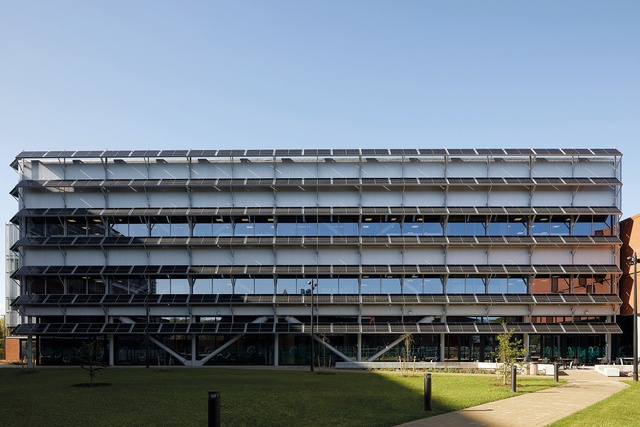
Externally, the corrugate-clad research volume is mostly no-nonsense architecture. Vertically run corrugated zincalume metal cladding is a nod to the farm sheds of Aotearoa but, at this scale and interspersed with extensive glazing, it starts to depart from the shed reference. Interestingly, Architectus’ neighbouring Tuhiraki for AgResearch also adopts this vertical run corrugate to clad its workplace building, albeit in pioneer red. The architects no doubt had the same reference in mind but, with its pitched roof, generous eave and smaller-format glazing, Architectus has borrowed more directly from our agrarian architecture.
Relief is offered to the north of this volume by a photovoltaic brise soleil providing articulation, function and energy. The ability to exploit the opportunities of photovoltaic panels creatively at this scale is the result of an agreement with Meridian whereby extensive solar arrays are being installed across the campus as it phases out its historical reliance on coal.
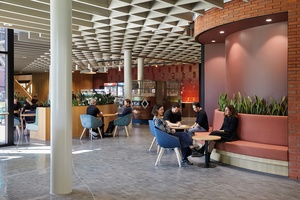
Through this brise soleil, the workspace looks out over the surrounding campus. With working areas to the north, the southern side of each floor plate is given over to lab spaces, allowing proximity at the same time as encouraging unintentional interaction. The labs are modularised and double-loaded around a central circulation spine, resulting in a very deep plan. Land-locked labs are glazed into the adjacent workspace, offering glimpses of the lab work that is still the backbone of research within the building. The reality, however, is that this glazing offers very little actual insight into the science research being undertaken but more into whether or not the labs are being used.
So, does the building meet the brief of science being on display? As you wander around, it is clear that this is a building that people want to use. From the social café on the ground floor, ringed with meeting booths and rooms, to the social tea bays at the upper levels, the architecture of Waimarie draws people to this building and encourages them to interact. While science breakthroughs may happen in the lab or out in the field, they are equally a result of the collaborations, reflections and conversations that occur when you bring experts together. This building was briefed in and the concept set prior to the seismic shifts in the adoption of remote working brought on by Covid. It is, however, examples like this that serve as pivotal exemplars that draw people together, allow for collaboration away from a screen and provide role-modelling for the next generation; this is science on display.
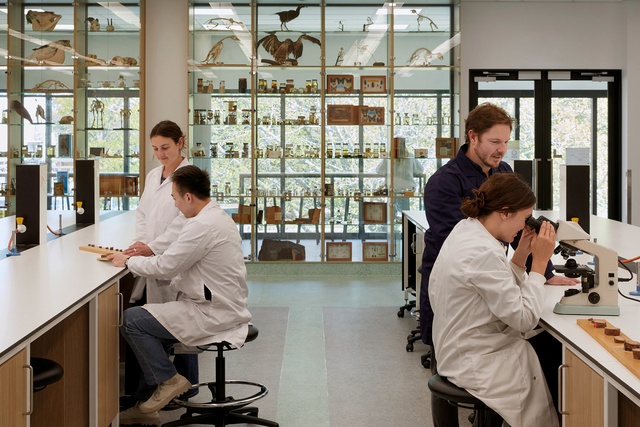
References
1 The RIBA 2030 Climate Challenge targets buildings to limit embodied energy to less than 750kgCO2e/m2 by 2030 for non-domestic new-build offices.


